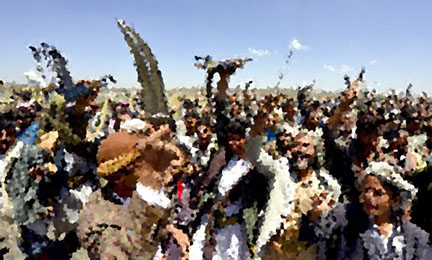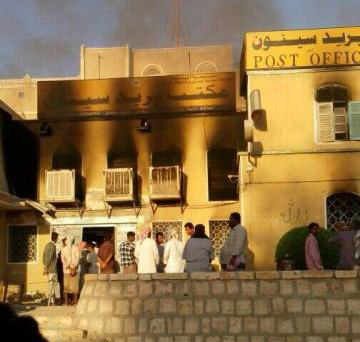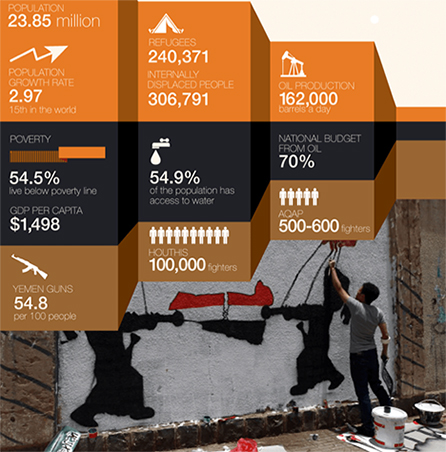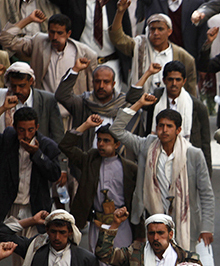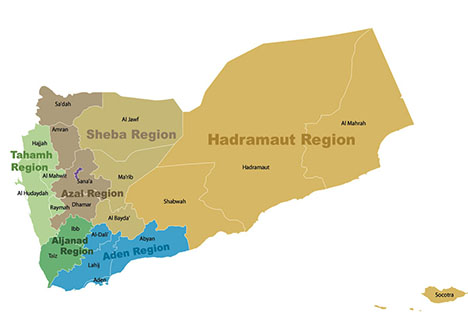
President Hadi of Yemen, left; King Abdullah of Saudi Arabia, right
In the space of 24 hours two countries on the Arabian Peninsula have seen a change, or at least anticipated change, in leadership. Yesterday President Hadi of Yemen, his Prime Minister Khaled Baha and the entire cabinet resigned after bowing to demands made by the Huthi leadership. The complicated political system ensures or at least suggests that he must remain in power for at least three months, although what power he actually has is severely limited. Not long after midnight King Abdullah of Saudi Arabia passed away at the estimated age of 90. The new Saudi monarch is Crown Prince Salman bin Abdulaziz Al Saud, who is 79, with Muqrin Bin Abdulaziz as the new crown prince. Given the fact that Sultan Qabus of Oman is in his mid 70s further change is possible as the years roll by. Qatar and the Emirates have relatively young rulers, so their stability does not appear to be in question.
Yemen is in free fall politically. The Huthis have taken control of most of the northern highlands and the capital city Sanaa, while they continue to battle local tribes in Marib and the Jawf. Hirak has, at least in spirit, seceded from the once-touted wahda. Al-Qaeda continues its attacks on Yemen’s military and the Huthis, while there are now reports that ISIS/ISIL is trying to muscle into Yemen as well. Hadramawt has also removed itself from any central authority. Only Socotra remains isolated from the potential for violence. This political quagmire is even murkier due to the behind-the-scenes (and at times quite overt) maneuvering of former President Ali Abdullah Salih, who remains a potent force and appears to have ambitions of regaining power. Yemen has no functioning government, the economy has ground to a halt, foreign aid from the Saudis has all but ceased and there are daily clashes that take the lives of ordinary Yemeni citizens. Yemen has not become another Iraq or Syria, but it is teetering on the brink. Continue reading Yet more change in Arabia

